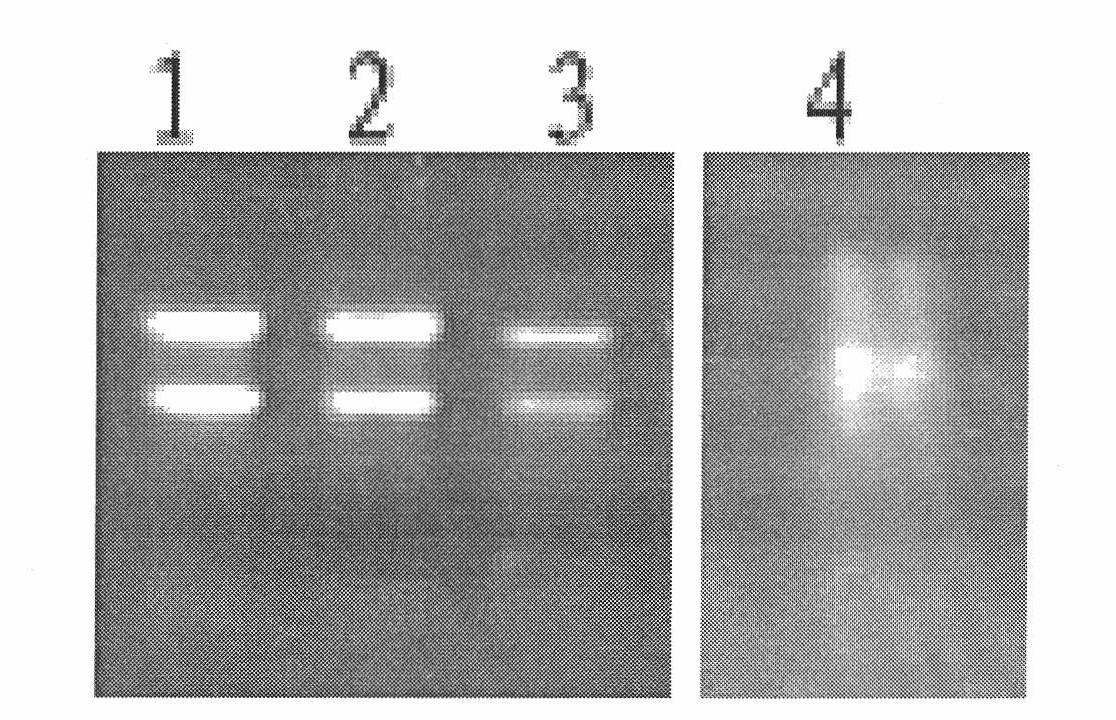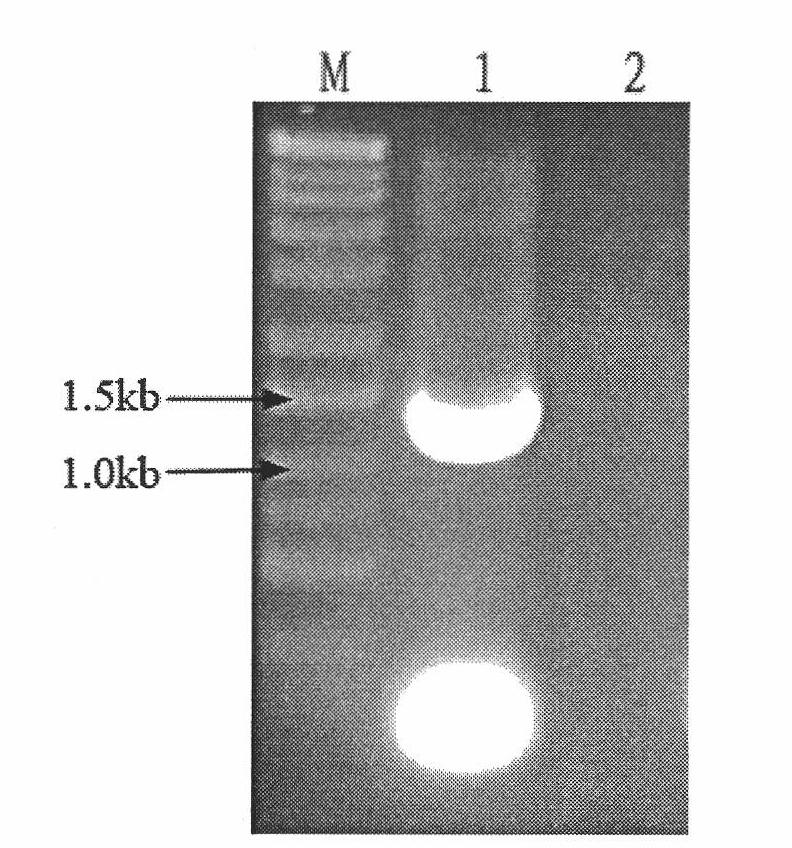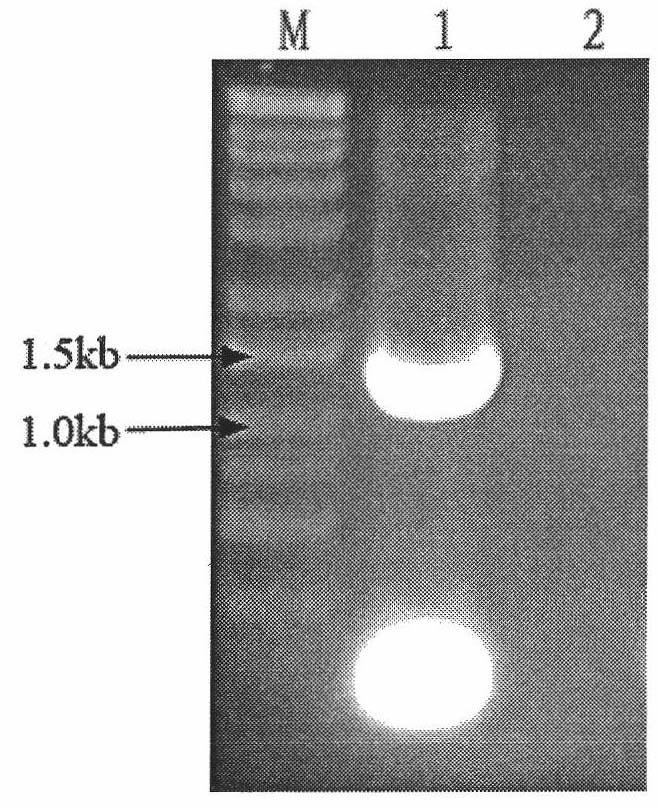Method for extracting RNA of sweet potato root tuber and application thereof
A technology of root tubers and sweet potatoes, applied in the field of molecular biology, can solve the problems of high toxicity of lysate, time-consuming and laborious, unsatisfactory results, etc., and achieve the effect of high purity, large quantity and good integrity
- Summary
- Abstract
- Description
- Claims
- Application Information
AI Technical Summary
Problems solved by technology
Method used
Image
Examples
Embodiment 1
[0040] (1) Preparation of reagents
[0041] A. Preparation of DEPC water: Add 0.1% (volume ratio) DEPC to double-distilled water, stir for more than 4 hours, place at 37°C for overnight treatment, and sterilize at 121°C for 20 minutes;
[0042] B. 1mol / L Tris-HCl (pH9.0): add 12.114g Tris to 100ml sterilized DEPC water, adjust the pH value to 9.0 with concentrated hydrochloric acid;
[0043] C, 0.5mol / L EDTA (pH8.0): 18.61g EDTANA 2 .H 2 O, dissolve in unsterilized DEPC water, make up to 100ml, adjust the pH value to 8.0 with NaOH particles, and sterilize at 121°C for 20min;
[0044] D. 8mol / L liCl: Dissolve 33.912g LiCl in unsterilized DEPC water, dilute to 100ml, and sterilize at 121°C for 20min;
[0045] E. 4mol / L NaCl: Dissolve 23.26g NaCl in unsterilized DEPC water, dilute to 100ml, and sterilize at 121°C for 20min;
[0046] F. 5mol / L potassium acetate: Dissolve 49.07g potassium acetate in unsterilized DEPC water, dilute to 100ml, and sterilize at 121°C for 20min;
...
Embodiment 2
[0069] (1) Preparation of reagents
[0070] A. RNA extraction buffer (prepared 100ml): 5ml 1mol / L Tris-HCl (pH9.0), 25ml 4mol / L NaCl, 5ml 0.5mol / L EDTA (pH8.0), 1g CTAB and 1g PVP and mix well, Then the volume was adjusted to 66ml with sterilized DEPC water, and 33ml of water-saturated phenol (pH4.3) and 1ml of β-mercaptoethanol were added before use.
[0071] B. Polysaccharide removal solution (100ml prepared): prepared by mixing 10ml absolute ethanol, 8ml 5M potassium acetate and 82ml sterilized DEPC water.
[0072] (2) Extraction of total RNA in the later stage of sweet potato root development
[0073] The same as the operation of step (2) in Example 1, the only difference is that the sample used is 1 g of sweet potato tuber tissue in the later stage of development (140 days of growth period). The extracted total RNA was tested by 1.0% agarose gel electrophoresis, and the 28S, 18S, and 5.8S band patterns were clear, indicating that the integrity of the total RNA obtained ...
PUM
 Login to View More
Login to View More Abstract
Description
Claims
Application Information
 Login to View More
Login to View More - R&D
- Intellectual Property
- Life Sciences
- Materials
- Tech Scout
- Unparalleled Data Quality
- Higher Quality Content
- 60% Fewer Hallucinations
Browse by: Latest US Patents, China's latest patents, Technical Efficacy Thesaurus, Application Domain, Technology Topic, Popular Technical Reports.
© 2025 PatSnap. All rights reserved.Legal|Privacy policy|Modern Slavery Act Transparency Statement|Sitemap|About US| Contact US: help@patsnap.com



